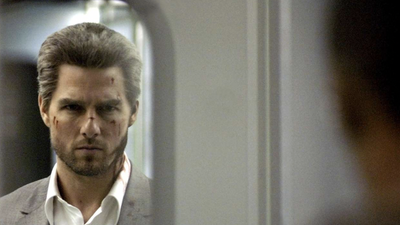Did the look of “Collateral” seem like a step down for Mann, and for movies? I worried about that.
The actual movie, which came out 20 years ago this week and just came out on 4K Blu-ray for the first time, was a much richer experience. It didn’t look slick or solid like Mann’s shot-on-film projects. It had a rough look, as if we were seeing footage captured on the fly by somebody who wasn’t supposed to be present. It felt raw, like a lot of films in the late ’90s and early aughts that had been shot with standard-definition video cameras and then printed to 35mm film (“film out” is what this process was called), creating a strange hybrid texture. (For examples, check out “The Celebration,” “Dogville” and “28 Days Later.”)
I was struck by the fact that visual elements that most big-budget Hollywood movies would have avoided for fear of being called amateurish (such as lots of grain in footage captured at night, or obvious video “tells” like smeariness/strobing) were not only present in “Collateral” but seemed to have been leaned into rather than minimized. The movie seemed very comfortable in its own digital skin. This was not unusual in low-budget work, but it was highly unusual in a $65 million production like “Collateral.” Even George Lucas, whose second prequel “Attack of the Clones” was the first “Star Wars” movie shot digitally, tried to make digital look like 35mm film to the maximum extent possible.
Most striking of all — and to my mind, a big compensation for anybody who missed the solid richness of 35mm film — you could see pretty much everything that was happening at night in Los Angeles, including the way the city’s lights were reflected in in low clouds. There was no easy way to capture that distinctive characteristic of urban life on motion picture film. Not as vividly, anyway.
This was the look Mann wanted, according to an American Cinematographer article. Co-director of photography Paul Cameron (working with Dion Beebe) said the director “wanted to use the format to create a kind of glowing urban environment; the goal was to make the L.A. night as much of a character in the story as Vincent and Max were.”

